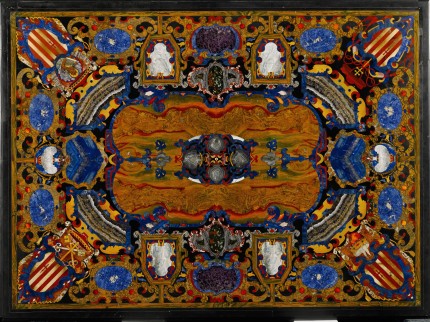
The UK Culture Ministry has put a temporary export bar on an Italian inlaid pietre dure table top that sold for £3,509,000 ($5,323,855), more than five times its high estimate, at a Sotheby’s auction last December. Made in the Grand Ducal workshops in Florence between 1600 and 1620, the table top is a glorious technicolor extravaganza of marble and semi-precious stone including agate, quartz, chalcedony, jasper and imported Persian lapis lazuli of the highest quality.
The four corners of the table are inlaid with coats of arms of the Grimani family, one of Venice’s most wealthy and powerful noble families. Family crests are rare motifs in the hard stone tables made by the Grand Ducal workshops, and this table is unique in having four of them. The abstract decoration around the crests is also unique. Other armorial table tops were commissioned by the Medici family as gifts for allies and dignitaries, and almost everything produced in the workshops was done at the behest of the Medici family. It is possible that the Grimanis arranged a private commission. There are no extant records to confirm either way.
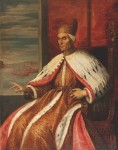 The family certainly had enough pull to access the Grand Ducal workshops. Founded by spice and textile merchant Antonio Grimani (1434-1523), the family’s fabulous wealth catapulted them to the top of Venetian society. Antonio was the first Doge, elected in 1521 and serving until his death. There would be another two Doges in the family — Marino Grimani (1532-1605) and Pietro Grimani (1677-1752) — and a great many other big shots in the Church, business and politics.
The family certainly had enough pull to access the Grand Ducal workshops. Founded by spice and textile merchant Antonio Grimani (1434-1523), the family’s fabulous wealth catapulted them to the top of Venetian society. Antonio was the first Doge, elected in 1521 and serving until his death. There would be another two Doges in the family — Marino Grimani (1532-1605) and Pietro Grimani (1677-1752) — and a great many other big shots in the Church, business and politics.
The table top’s decoration telegraphs the prominence of the family in multiple fields. Each of the four crests is topped with a different symbol. The red domed hat (bottom right corner in the picture) is the Corno Ducale, the traditional headpiece of the Doge. The crossed keys of St. Peter (bottom left) represent the family’s support of the papacy and the many papal offices they held in reward for that support. The lion holding a book (top left) is the symbol of St. Mark the Evangelist, Venice’s patron saint, is a nod to two cardinals in the family who held the prestigious position of Cardinal Priest of San Marco. The double cross (top right) refers to the Grimaldi holders of the coveted and highly lucrative position of Cardinal Patriarch of Aquileia.
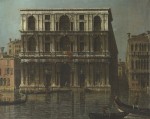 The Grimanis were not shy about parading their wealth. They amassed major collections of antiquities and art and packed them into two great palaces, the Palazzo Grimani di Santa Maria Formosa and the Palazzo Grimani di San Luca on the Grand Canal. Both palaces employed some of the greatest architects of their time, including Sansovino and Palladio. Family members and the palaces were painted by the likes of Tintoretto and Canaletto. The pietre dure table top had to be grand to decorate these homes.
The Grimanis were not shy about parading their wealth. They amassed major collections of antiquities and art and packed them into two great palaces, the Palazzo Grimani di Santa Maria Formosa and the Palazzo Grimani di San Luca on the Grand Canal. Both palaces employed some of the greatest architects of their time, including Sansovino and Palladio. Family members and the palaces were painted by the likes of Tintoretto and Canaletto. The pietre dure table top had to be grand to decorate these homes.
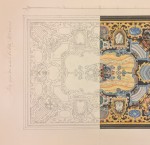 The fortunes of the Grimani family began to decline in the late 18th century courtesy of the Napoleonic invasions. The family started selling off their collections piecemeal in 1806. They sold off the Palazzo Grimani di San Luca to their new Austrian overlords in around 1816-1818 and the Austrians converted it into a post office. The table top was in the Palazzo Grimani Santa Maria Formosa until 1829 when it was acquired by Henry Greville, 3rd Earl of Warwick (1779-1853) through British Consul William Taylor Money (1765-1834) who acted as Lord Warwick’s agent in the purchase of the table top and a marble floor for the earl to install in the renovated Great Hall of Warwick Castle.
The fortunes of the Grimani family began to decline in the late 18th century courtesy of the Napoleonic invasions. The family started selling off their collections piecemeal in 1806. They sold off the Palazzo Grimani di San Luca to their new Austrian overlords in around 1816-1818 and the Austrians converted it into a post office. The table top was in the Palazzo Grimani Santa Maria Formosa until 1829 when it was acquired by Henry Greville, 3rd Earl of Warwick (1779-1853) through British Consul William Taylor Money (1765-1834) who acted as Lord Warwick’s agent in the purchase of the table top and a marble floor for the earl to install in the renovated Great Hall of Warwick Castle.
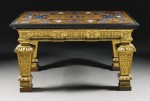 Interestingly, the Grimani’s refused to sell the entire table. The insisted on keeping the legs and base of the table which they then topped with a fake apparently to save face. Lord Warwick had a new base made and by 1847 the table was on display in the Gilt Drawing Room. Another pietre dure table top Warwick bought from the Grimani’s was displayed in the State Bedroom. The second table top was made in Rome and doesn’t have anything like the same visual impact or historic iconography, but it’s still an exceptional example of the art form.
Interestingly, the Grimani’s refused to sell the entire table. The insisted on keeping the legs and base of the table which they then topped with a fake apparently to save face. Lord Warwick had a new base made and by 1847 the table was on display in the Gilt Drawing Room. Another pietre dure table top Warwick bought from the Grimani’s was displayed in the State Bedroom. The second table top was made in Rome and doesn’t have anything like the same visual impact or historic iconography, but it’s still an exceptional example of the art form.
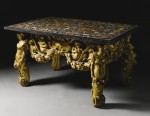 Both table tops were sold at the Sotheby’s auction. The Roman piece sold for £1,625,000 ($2,465,450), more than three times its high estimate. The UK is not blocking export of that one, but there’s no reason to assume the buyer applied for an export license in the first place. British institutions have until September to raise the purchase price plus VAT of the Florentine table to keep it in country.
Both table tops were sold at the Sotheby’s auction. The Roman piece sold for £1,625,000 ($2,465,450), more than three times its high estimate. The UK is not blocking export of that one, but there’s no reason to assume the buyer applied for an export license in the first place. British institutions have until September to raise the purchase price plus VAT of the Florentine table to keep it in country.
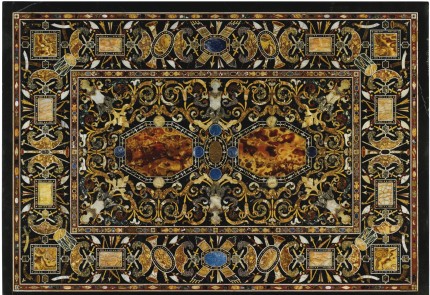
Why? What sort of argument results in its being vital that this work stay in Britain?
Personally I’d prefer that the finest art works be held in a great diversity of places, public and private, to maximise the chances of their lengthy survival.
In particular, I am sceptical of the wisdom of having so many world treasures held by one absurdly rich museum in California, with its permanent high risk of earthquakes.
Quite right, in re earthquakes and re collections which occlude all the interesting data when even slightly in situ. I am seeking information on the Tuscany family and antecedents of Vincente and Emma(Brother and sister) Toscani.. The last time I saw him, ca 1955, he was sitting in his (admittedly old) Rolls with the coat of arms on the doors and the chauffeur outside. All data gratefully received.
All I can think when I see intricate work like this is where do you start? You’re the workmen. You come in and see the drawing and the blank top and your boss says “Get to it, boys. You have so long to get it done.” Yikes.
More or less “Italian” inlaid ‘pietre dure‘ floors can be seen in the Saint John’s Co-Cathedral, built by the Order of St. John between 1572 and 1577, in Veletta (“Kon-Katidral ta’ San Ġwann”). Of course, the whole thing looks even better in real life, but to get an impression check this:
https://upload.wikimedia.org/wikipedia/commons/e/ef/Stjohns-cathedral-209.jpg
https://upload.wikimedia.org/wikipedia/commons/1/10/Malta%2C_St_John%27s_Pro-Cathedral.jpg
As far as I can tell, Adrienne, after(!) 1955, a ‘Toscani’ opened up an ice-cream parlor in my hometown.
I understand why the first table is more valuable and rare, but I confess that I prefer the design on the second.
Such exquisite workmanship! I think I need to find a character who collects this kind of table.
:blush: Sorry about the repeated comment. My ‘puter hiccuped.
Strange that objects of a British provenance are allowed to be exported while this piece, which belongs in Venice if anywhere, should be blocked. Something going on behind the scenes there? The pietre dure floor in Westminster Abby is the one that should receive the attention, also reportedly done by Italian workmen I believe.
There’s something sad about great historic families losing their wealth, their collections being broken apart, and a great palace becoming a post office. And yet, as a member of the dwindling middle class, I shouldn’t find it sad at all.